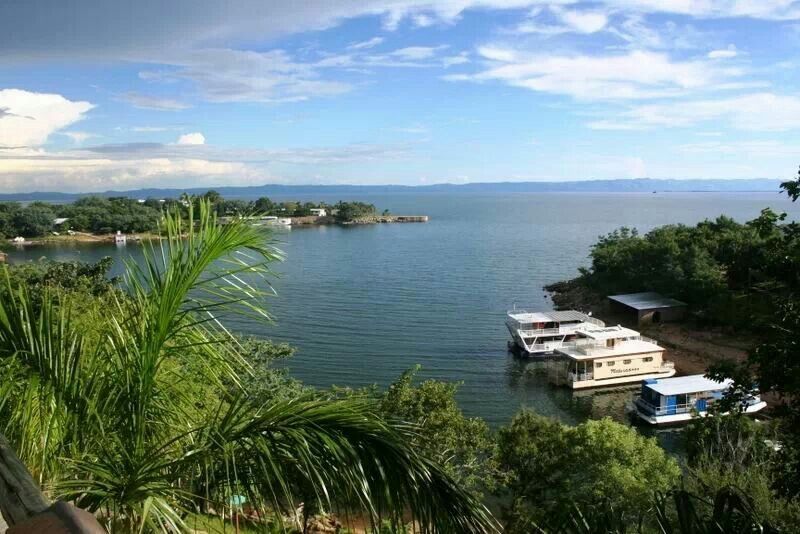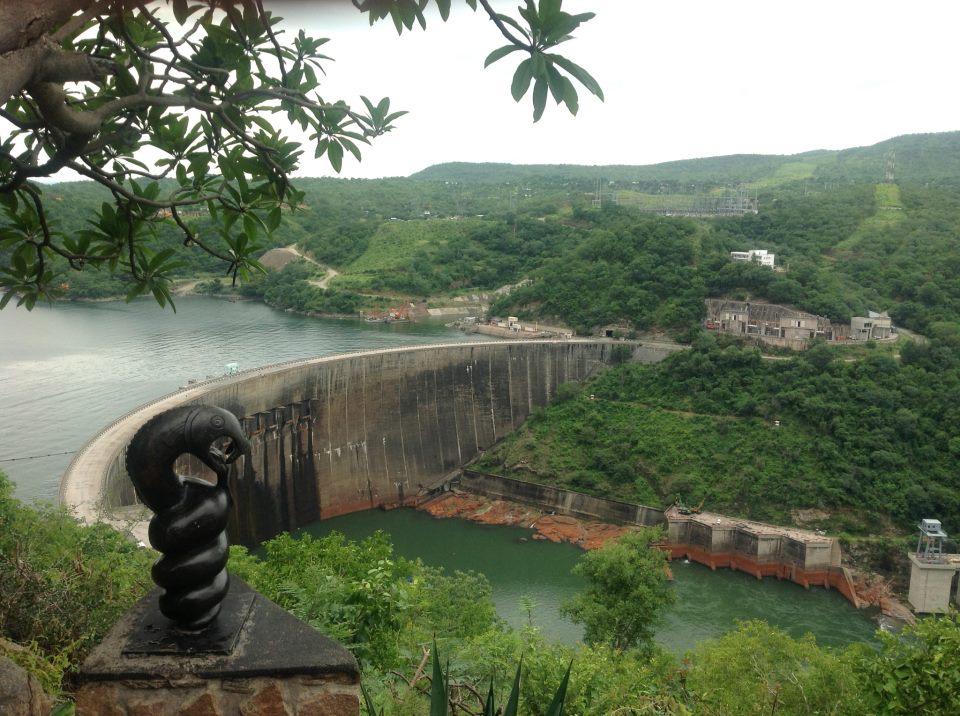On December, 2019 I took a road trip to Kariba, which is 365km, west of the Zimbabwean capital, Harare.
Kariba is located just about halfway between the source and mouth of the Zambezi River, and is also 200km downstream of the mighty Victoria Falls. It lies on the border between Zimbabwe and Zambia and the name Kariba was derived, by the Europeans from the local Shona word 'kariva' or 'kariwa' meaning 'little trap' or 'bridge'.
I last visited Kariba, in 1995 when I was still in primary school and interesting enough my memory of this beautiful place, yet unknown to most international tourists, was a bit fuzzy.
It was a school trip, just before we wrote our grade seven exams that two buses full of school kids from grade five upwards, made their way to Kariba. All I recalled from this trip was the boat ride, visiting the dam wall and a crocodile farm. So, the recent trip was as good as my first drive to Kariba, which made it very interesting.
Roads
The better part of the road to Kariba is one of the busiest roads in Zimbabwe as it is used by trucks from South Africa to Zambia and as far as the Democratic Republic of Congo (DRC).
There is also a lot of cross border movement as Zimbabweans travel to Zambia to buy goods for resale in the informal market or for domestic use. This has seriously damaged some parts of the road, which can pose serious danger to the motorist.
The Zimbabwean government said that it has started constructing the road starting from the border with South Africa (Beitbridge) all the way to Chirundu, which borders Zimbabwe and Zambia.
For you to get to Kariba, you branch out to your left when you get to Makuti on your way to Chirundu. From there the road doesn’t have much potholes, but it’s very curvy.
Despite this seemingly dangerous road that requires one to exercise caution, one can enjoy the stunning scenic views on their way to Kariba.
It started raining as I drove closer to Kariba, which made me slow down on the driving and ended up taking more time on the road than anticipated. However, I was happy to notice that it wasn’t raining in Kariba, as I intended to waste no time upon arrival.
Arriving in Kariba
As you approach Kariba town, you will first notice the vast dam from the mountain top. The good view is somewhat ‘soiled’ by electricity lines.
I continued driving further down the hill and came to a fuel (gas) station, which also houses the offices of the Zimbabwe Tourism Association (ZTA).
Two officers manned the ZTA offices and one of them noted (off-the-record) that tourists were beginning to visit Kariba. The ZTA officer said that they were aggressively promoting Kariba as a touristic destination and their efforts were beginning to pay dividends.
However, I didn’t come across several foreign tourists as I went around Kariba on that particular day and the next.
Tony and Boo Peel, who are travel specialists in Zimbabwe, noted in a blog that Kariba is often overlooked by international tourists, possibly because it is not that well publicised or known about by foreign travel agents.
“This is a big mistake, as it's an absolute vacationer's paradise,” they argued.
They are right!
One can do a lot in Kariba, from sunset cruises, fishing, game viewing, particularly in the Matusadona National Park to appreciating the scenic views.
From the ZTA offices, where tourists can get some information on Kariba, one can see an array of white houseboats docked at the Marineland harbour.

I then decided to drive towards the harbour to inquire on boat-rides. Here one can charter a houseboat, hire a fishing boat and a speedboat. All these come with professional Kariba skippers who can take you out on the lake for a fishing trip and game viewing cruise.
The harbour, which is well protected from most storms, provides facilities for the mooring of more than 100 houseboats.
I inquired on the sunset cruise and was told that the cheapest one leaves the harbour with a minimum of 10 people and each person pays US$20 for a cruise, which lasts for about two hours.
On that particular day, there were no enough numbers for the boat to leave the harbour.
So if you are one who enjoys beautiful sunset cruises and fishing, this is the place to be.
From the harbour I then drove to the dam wall, a major tourist site in Kariba.
Construction on the Kariba Dam wall began in 1955 and was completed in December 1958.
In as much as the record was overtaken by other dams, it is still the world's largest man-made reservoir by volume.
Kariba's reservoir volume is 185 billion m3 and has a surface area that covers about 5500km2 and it extends for more than 280km.
“The vastness of the lake allows for multi-day excursions from one end of the lake to the other in one of the many Kariba houseboats or on the Kariba Ferry,” argue Tony and Boo Peel.
“The Zambian side does not have the same magnificence as the Zimbabwean shoreline. For one, the game is fairly non-existent on the northern bank and second, it lacks the stunning backdrop of the Matusadona mountains that the Zimbabwean side has.”
The dam wall was constructed to provide Southern Rhodesia (now Zimbabwe) and Northern Rhodesia (now Zambia) with hydroelectric energy.
However, the dam is currently under rehabilitation with the help of EU, World Bank, Swedish government and Africa Development Bank.
The work on the plunge pool reshaping started in 2017, while the spillway refurbishment project is expected to complete in 2023.
It should be stated that at the end of the construction of the dam, it took five years for dam to assume its present day dimensions.
There was a massive relocation operation, which saw 22000 people moved into Zimbabwe and 35000 people into Zambia, together with 6000 animals from the river valley. The relocation, which became known globally as Operation Noah, took six years to complete and animals were moved into the Matusadona and Chete safari areas.
Mystery
The story of the initial construction of the Kariba dam cannot be said without mentioning the myths and mystery involving the Zambezi River god, Nyami Nyami and his home.
According to African mythology of the Tonga tribe, he lived under a large rock close to the present day Kariba dam wall.
No one dared to venture near it and those who tried drowned with their canoes in the whirlpools.
The Tonga people also believe that Nyami Nyami is married and that the building of Kariba Dam wall separated him from his wife.
This, they said, angered the river god who in turn threatened the peace of the valley.
Scenic views
From the dam wall, I drove up the mountain for some breathtaking scenic views of Kariba.
From one of the observation points, I could see the Kariba dam, Marineland harbour and fishing boats.
If you get to the observation points towards the end of the day, like I did, you get to see some beautiful sunset.
Apart from the scenic views at Kariba Heights, one also gets to see the historic church of Santa Barbara, which is on top of a hill.
The circular church was dedicated to 86 African and Italian construction workers who died building the dam.
Of the 86, it is believed that 17 remains of the construction workers are embedded in the dam wall after flash floods hit during the concreting.

Islands of Kariba
Lake Kariba has several islands both on the Zimbabwean and Zambian side of the border, which make for idyllic getaways, staying at beautiful island lodges or safari camps with vast scenic views of the lake.
The Zimbabwean side of the lake has about 1 000km of shoreline.
Elephants are often seen swimming between the islands and the shore, while hippopotamus are also a common sight in Kariba.
I witnessed several swimming at the Chawara Harbour as the fishermen went about with their business.
![Pic_7_of_Hippo_partially_submerged_in_water_near_fishermen_boats[1].jpeg Pic_7_of_Hippo_partially_submerged_in_water_near_fishermen_boats[1].jpeg](/upload/medialibrary/e0c/e0ca0c024276fc08e8ac8006343c2d8f.jpeg)
Although I couldn’t manage to go for a sunset cruise, I recall how enjoyable the boat ride was during the school trip and I would recommend for anyone willing to sample this beautiful place not to think twice.
Zimbabwe is endowed with beauty and the scenic views of Kariba are enough testament of a country waiting to be explored outside Victoria Falls.


